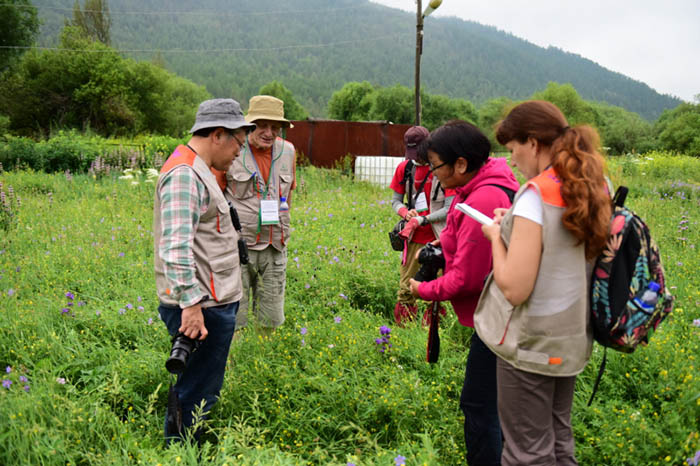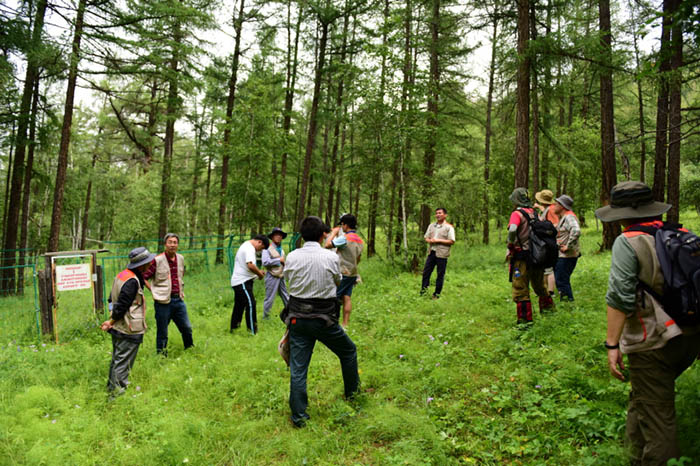
Korean and Mongolian scientists look around the research forest at the National University of Mongolia on July 21, along with other researchers from China, Japan and Russia. They discuss research methods into plant diversity and conservation across East Asia.
Korea and Mongolia have agreed to cooperate on plant conservation in Mongolia.
The Korea National Arboretum, part of the Korea Forest Service, announced on July 25 that it will conduct joint research with the National University of Mongolia to conserve plants grown across Mongolia. Researchers from Korea and Mongolia, starting this year, will work on building platforms to preserve plant diversity across a broad range of studies, and their work over the next five years will include a study on the dispersion of vascular plants in Mongolia, the development of botanical specimens, image data, breed collections, and the publication of illustrated books.
Preserving plant diversity in Mongolia is critical not only so that researchers can trace the origins of plants grown on the Korean Peninsula, but also so that they can preserve plant diversity across all of East Asia. However, the foundation to conducting research into the dispersion or classification of plants grown in Mongolia, including even image data, is not well-developed.

Researchers in the East Asia Biodiversity Conservation Network (EABCN) participate in an on-site discussion at the Hustai National Park in Mongolia on July 21.
As part of the joint research efforts, the Korea National Arboretum co-hosted the "2016 East Asia Biodiversity Conservation Network (EABCN) Workshop" together with the National University of Mongolia from July 18 to 22 in Ulaanbaatar. Other members of the network also joined the workshop, including the Forestry and Forest Products Research Institute of Japan, the South China Botanical Garden, part of the Chinese Academy of Sciences, and Russia's Vladivostok Botanic Gardens.
During the workshop, four presentations, including one on recent trends in Mongolian plant research, were made, along with side-meetings and working groups that will cover plant diversity in Mongolia. On-site discussions were held at the research forest of the organizing university and at Mongolia's Hustai National Park.
"With the completion of these joint research activities, the list of vascular plants and their dispersion map will be updated, while a database of specimens and breeds will be developed, and breeding and restoration technologies will be shared. This will help to accelerate a broad range of work that's being undertaken to conserve plant diversity in Mongolia, starting with updating the list of vascular plants," said the Korea National Arboretum.
Finally, the agency added that it plans to expand international joint research based on the EABCN.
By Chang Iou-chung
Korea.net Staff Writer
Photos: Korea National Arboretum
icchang@korea.kr
